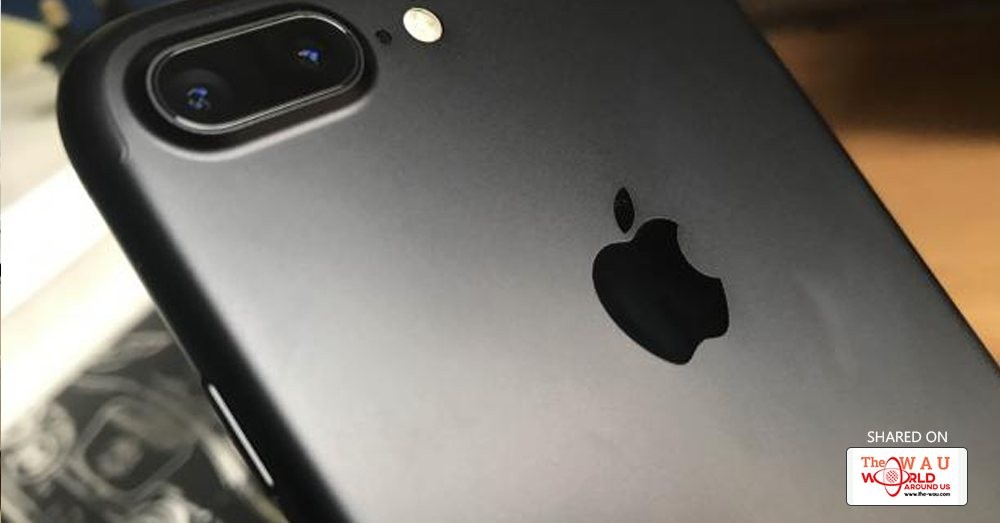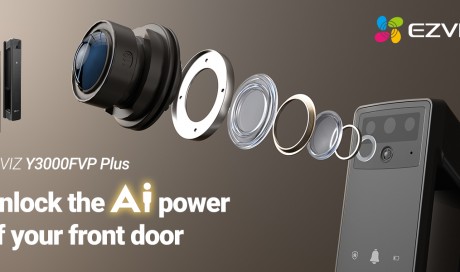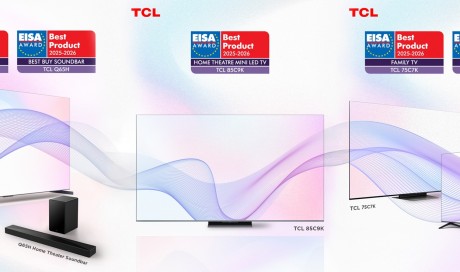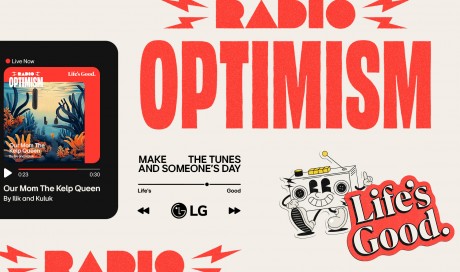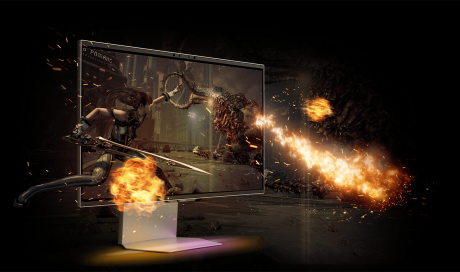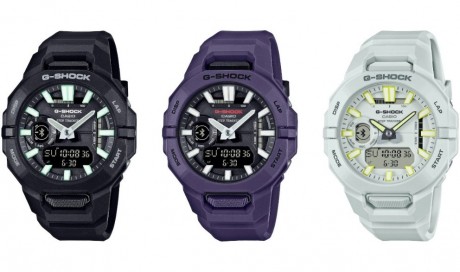We hate to say "I told you so," but anyone expecting the iPhone 7 and iPhone 7 Plus to be major, ground-breaking, feature-rich overhauls were destined for disappointment. There was a LOT of talk for months ahead of the launch suggesting it wouldn't be so. MANY leaks strongly implying an incremental update on what came before, and much of them coming from major sources. The kind of sources who are consistently accurate. The kind of sources you just can't ignore.
Sources like KGI Securities' analyst Ming-chi Kuo, who at this point pretty much has a Oracle-like status in the smartphone world and a near 100% accuracy rating when it comes to iPhone predictions. As much as we'd have liked to belive the iPhone 7 series was going to be something special, there were enough signs there indicating that it wouldn't be. It would be akin to the "S" iterations in the firm's catalogue; an incremental update, with a major overhaul to follow in the subsequent year.
It's still the case that the big release to watch is the iPhone 8 (if it is indeed called that) launching for the iPhone's 10th birthday in 2017.
So, sure enough, the iPhone 7 and iPhone 7 Plus look very much like last year’s models, despite a tweak here and there, plus a couple of new colour options in the form of “Jet Black” (gloss) and “Black” (matte). They have slightly updated internals, and an impressive new camera, but that's about it really; the big guns are waiting in storage for another seven months or so.
And one other big rumour turned out to be true, also one we were hoping would not be. Neither handset has a 3.5mm headphone jack, which really does suck despite Apple’s claims to the contrary about being “brave” for removing it. The workaround Apple has come up with is an adapter which will ship with all iPhone 7 and iPhone 7 units, but for audiophiles who love their own carefully chosen headsets, it's another layer of faff.
Apple says its sold a billion iPhones since 2007, which is impressive. The pace of adoption over the years has been frankly insane. But that party is drawing to an end. As we saw earlier this year, things, while still very respectable, are beginning to slow down.
Tim Cook glossed over dipping sales in 2016 but that’s to be expected. Apple’s main MO for the event was simply to show off how many brands it is now associated with – brands like Nike, Pokemon, Nintendo and, err… James Cordon.
Apple's sales improved in late-2016, however, as demand for iPhones picked up again.
“During the first eight months of 2016, Apple saw its smartphone market share remain at a record low compared to the last few years. However, the iPhone 7 series launch has been able to offset most of the previous decline. The iPhone 7 series demand was healthy through the holiday period, especially in markets such as USA, Western Europe and Japan somewhat offsetting a softer than expected performance in China. Apple surpassed Samsung in December 2016 capturing a 19% share of the global smartphone sell-through volumes," said Jeff Fieldhack, Research Director at Counterpoint Research.
He added: "Furthermore, Apple’s share of the $400+ segment crossed the 70% mark in December 2016 from a low point of 47% in May 2016, which is commendable considering the premium segment growth has been flat annually. A healthy sell-through of iPhones in the channel points toward a strong holiday quarter from a shipments perspective and strong wholesale ASP as the mix shifted towards higher capacity and larger screen iPhone models. In markets, such as the USA, Apple’s share in the premium segment has reached close to a record 80% in this peak season.”
Apple’s decision to move to a three-year hardware cycle has been met with a lot of resistance. Many feel the iPhone 6 design language the iPhone 7 and iPhone 7 Plus are based on are tired and in need of a refresh. Whether you agree is entirely subjective. Personally, I don’t mind the way they look, though I definitely wouldn’t buy one of these right now as I am infinitely more interested in the Google Pixel XL – but that’s just me.
Apple has implemented a few key changes but for the most part the average consumer will struggle to tell the iPhone 7 Plus from the iPhone 6s Plus – and even the iPhone 6 Plus for that matter. And herein lies the rub: Apple’s switching to a three-year hardware cycle, which is all well and good, but aside from a few key changes to imaging and performance, there’s not a lot on show here to get really excited about.
This is the kind of update I’d expected to follow the iPhone 6 – the iPhone 7 and iPhone 7 Plus feel very much like an S-update. Not a whole number bump, which are traditionally the more innovative releases for Apple, showcasing new design attributes and advanced technology.
I like that the iPhones are now waterproof, that’s a solid move by Apple, but I just can’t help but feel a lot of people, those upgrading from 6s models, especially, might feel short-changed by what’s on offer here. The are some big pluses like the camera and waterproofing, but beyond this it almost feels like the same handset we saw released in 2014 and 2015.
And this is not something I expect from a company that claims to be the most innovative brand in technology.
Apple knows what its users like, so it says, and it knows how to give it to them. This is why it is the biggest tech brand in the world. The split in features between the iPhone 7 and iPhone 7 Plus, however, is only getting bigger. I mean, save for size, I cannot think of a good reason not to get the Plus over the standard model. Case in point: for the first time ever, shipments of the iPhone 7 Plus model have out-paced the standard iPhone 7 model.
This is significant because it not only shows a maturation inside Apple’s traditional user base, they’re warming to the idea of larger phones, but it also shines a light on just how important consumers see the cameras on their phones. Apple says the iPhone 7 Plus is the best camera it has ever created. Whether this is the case will be detailed later on.
We've already delivered our verdict on the standard iPhone 7, but for those who crave a big-screen experience, the 7 Plus is likely to be of more interest. We'll be covering the key differences between the two siblings in this review, but won't be going into as much detail on the elements which are common across both phones - you can refer to our iPhone 7 review for those points.
iPhone 7 Plus Review: Design & Display
The 7 Plus shares an almost identical design to the smaller model, with the only significant difference - aside from the dimensions - being the fact that it has a dual camera setup on the back, which we'll cover later in this review. In every other regard this is simply just a bigger iPhone 7, so we advise you to refer to that review for more information.
It goes without saying that the iPhone 7 Plus boasts a larger screen than the standard model. Its 5.5-inch backlit LED panel has a resolution of 1080 x 1920 pixels, which is a jump from the 4.7-inch, 750 x 1334 pixel screen on the smaller model. A 1080p display on a phablet isn't all that impressive in 2016, and many smaller Android phones have sharper screens. However, as was the case with the standard iPhone 7, it's impossible to pick out individual pixels so it's not that much of a concern. The panel is brighter and better at replicating colours than the one seen on the iPhone 6S Plus, which should give existing iPhone fans reason to upgrade.
Next year, however, is when things will get really interesting as Apple is moving over to AMOLED panels and that will bring a whole host of benefits to the iPhone 8 or iPhone X or whatever next year’s handset is called, the least of all being a bump to QHD resolution.
Like most things iPhone 7, the display technology on show here is just about par for the course. Apple has made some tweaks and improvements to the overall quality of the panel, which is expected, but it pales in comparison to the displays you find aboard the Galaxy S7 and Google Pixel XL.
iPhone 7 Plus Review: Hardware Specifications
In terms of technical specifications, the 7 Plus is an exact match to the iPhone 7, aside from RAM - the larger model has 3GB while the smaller version has 2GB. To be honest, it's hard to notice any real difference in day-to-day use, although the additional gigabyte should ensure smoother performance on the 7 Plus in the long run.
The powerful A10 Fusion chipset is something of a beast, and we weren't able to make it stutter or stumble during the review period. It's that good.
Apple has an immense command over the silicon inside its phones and the iPhone 7 and iPhone 7 Plus are no exception. The A10 chipset is the most advanced chipset in the world right now – nothing else comes close to what Apple is able to do with this chipset.
But like the design, this bump in performance just sort of fades into the background. For most consumers it is not a standout feature, as the iPhone 6s and iPhone 6 before it were also pretty exceptional in this regard as well. In fact, for the last three generations of iPhones I don’t recall anyone saying they weren’t potent enough in the performance department.
The A10 is more power-efficient as well but in my experience the battery life of the iPhone 7 Plus, in the long term, is pretty similar to what I experienced on the iPhone 6s Plus and iPhone 6 Plus before that. It’s good, solid and will see you through a full day with heavy usage but compared to what I’m regularly getting on my Pixel XL it’s nothing to right home about.
iPhone 7 Plus Review: Camera
Aside from the screen, this is one of the key areas where the 7 Plus differs from the normal iPhone 7. It has the same 12 megapixel lens as its smaller stablemate, which boasts an aperture of f/1.8 and OIS, allowing for really effective low-light shooting. However, the 7 Plus is packing a second 12 megapixel, f/2.8 telephoto lens which gives x2 optical zoom and works in conjunction with the other camera to create some impressive depth-of-field effects.
When taking a photo, the phone uses the data from both lens to create a depth map and then applies a nifty "Bokeh" effect to blur out the background and bring the subject into sharper focus. While the effect is artificial to degree, it's convincing - and to achieve it via normal means you'd need an expensive DSLR camera with a wide aperture, so what Apple has achieved here is remarkable. The telephoto lens also allows for incredible macro shots, and once you've taken a few snaps with the 7 Plus, you'll wonder how you ever coped without it.
And you don’t even need to take our word for it either, as the iPhone 7 Plus has been used to take the cover image for this month’s billboard magazine.
The photo was taken using Portrait Mode, an exclusive iPhone 7 Plus feature that takes advantage of the iPhone’s dual-lens camera, which blurs out the background of images, giving them a more professional feel.
“I had never shot [professionally] with an iPhone,” Mobley, the photographer who took the shot, explained. “It was a cool idea. I’m all about embracing new technology and not being afraid of it, so I was totally up for the challenge.”
He added: “You can definitely tell that there’s still some work that needs to be done with the technology. There are just some strange things that happen every once in a while. [For example], the hair; some of it’s cut out and looks like a mask.”
The image was also edited before being published on the magazine’s front cover. But this does show just how good Apple’s imaging technology is and if imaging is important to you, then the iPhone 7 Plus, while expensive, is definitely one of the best options on the planet right now.
iPhone 7 Plus Review: Audio
So yes, the 3.5mm headphone jack is gone in favour of the Lightning port and a new set of Lightning-based headphones bundled-in with the phones. What's also bundled-in is an adaptor dongle allowing users to keep using their 3.5mm headphones with the new devices. However, the iPhone 7 series non-headphone audio setup has also been upgraded; it's the first set of iPhone devices with stereo speakers!
On top of this, Apple has also developed a set of wireless "Airpods" allowing you to free yourself from wired headphones altogether. The Airpods feature a 24 hour battery life and are button-less, their setup is also synchronised across iCloud between devices. They use a dedicated W1 chip for audio and wireless, while built-in infrared sensors detect when you place them in your ears. Motion accelerometers detect touch to activate Siri and Voice accelerometer enhance your voice for calls and commands. They will ship in October and cost $159.
iPhone 7 Plus Review: Battery Life
There's a 2900 mAh battery inside the 7 Plus, which is a big jump from the 1960 mAh cell seen in the smaller model. Stamina could be something of a concern with the standard iPhone 7, but that's not the case with the Plus model - even by the end of the day, our review unit still had juice in the tank and we were able to push it a lot more in terms of playing games, watching movies and surfing the web.
Apple’s larger iPhones have always been good in the battery department and the iPhone 7 Plus is no exception. Even with very heavy usage the handset can still take a full day in its stride. Nothing really fazes the handset, whether gaming, video or streaming.
iPhone 7 Plus Review: Conclusion
If you must buy an iPhone in 2016 the iPhone 7 Plus is the model to go for. The standard iPhone 7 model is just, well… disappointing on too many fronts. Battery performance isn’t great, the display pales in comparison to cheaper Android alternatives and it lacks the iPhone 7 Plus’ main USP, the dual-lens camera.
For this reason it’s impossible to recommend the iPhone 7 over the iPhone 7 Plus. The Plus model, as always, is the vastly superior model. But you will have to pay a premium to access these benefits – and also use a larger phone as well.
Then there’s the case for whether or not you NEED to upgrade. If you’re using an iPhone 6s I would 100% say wait for Apple’s 2017 release. There’s nothing too new here to get massively excited about. It’s an iPhone and it works great, just like the iPhone 6s before it. I don’t see any major USPs on this handset that you can’t get elsewhere for less.
I tend to use iPhones on occasion, I used the iPhone 4, iPhone 5s an iPhone 6 Plus as well as the iPhone SE, but I have no desire to use either the iPhone 7 or iPhone 7 Plus. Instead, I’m waiting for next year’s model and filling the interim with the awesome Google Pixel XL.
You might feel differently, and if you’re using an older iPhone – say, the iPhone 5s or iPhone 6 – then the case for an upgrade is slightly different. If you’re using an older iPhone model then the case for an update is strong – you will notice the difference. For everybody else though, hold tight for 2017’s release as that one will be very impressive indeed!
Share This Post

